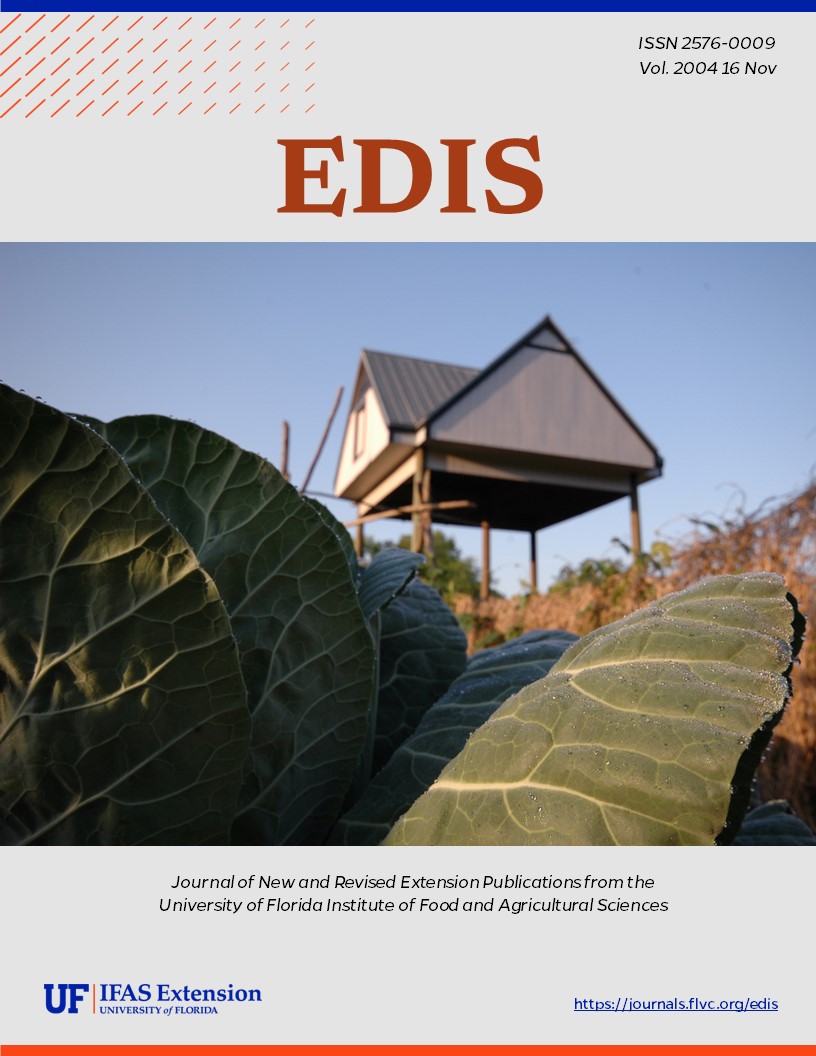Abstract
Common groundsel (Senecio vulgaris L.) is a weed that needs to be monitored year-round in container nurseries since these conditions are ideal for common groundsel. Seed can germinate only a few days after they land on the container medium surface (Figure 1). This document is ENH980, one of a series of the Environmental Horticulture Department, Florida Cooperative Extension Service, Institute of Food and Agricultural Sciences, University of Florida. Original publication date September 2004.
References
Bolques, A., J.G. Norcini, and J.H. Aldrich. 2003. Preemergent control of common groundsel (Senecio vulgaris). Proc. Southern Nursery Assoc. Res. Conf. 48:333-336.
Gallitano, L.B. and W.A. Skroch. 1993. Herbicide efficacy for production of container ornamentals. Weed Tech. 7:103-111. https://doi.org/10.1017/S0890037X00036952
Holliday, R.J. and P.D. Putwain. 1977. Evolution of resistance to simazine in Senecio vulgaris L. Weed Res. 17:291-296. https://doi.org/10.1111/j.1365-3180.1977.tb00481.x
Holliday, R.J. and P.D. Putwain. 1980. Evolution of herbicide resistance in Senecio vulgaris L: Variation in susceptibility to simazine between and within populations. J. Appl. Ecol. 17:770-791. https://doi.org/10.2307/2402655
Kadereit, J.W. and D. Briggs. 1985. Speed of development of radiate and non-radiate plants of Senecio vulgaris L. from habitats subject to different degrees of weeding pressure. New Phytol. 99:155-169. https://doi.org/10.1111/j.1469-8137.1985.tb03645.x
Theaker, A.J. and D. Briggs. 1993. Genecological studies of groundsel (Senecio vulgaris L.). IV. Rate of development in plants from different habitat types. New Phytol. 123:185-194. https://doi.org/10.1111/j.1469-8137.1993.tb04544.x
Unless otherwise specified, articles published in the EDIS journal after January 1, 2024 are licensed under a Creative Commons Attribution-NonCommercial-NoDerivs 4.0 International (CC BY-NC-ND 4.0) license.

